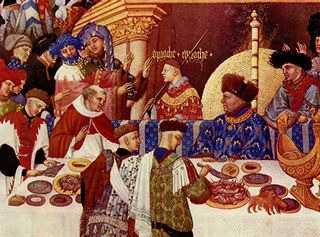20 February 2017
- A lot of food “waste” is the result of poor after-harvest practices. A cheap, simple moisture meter could reduce losses.
- Despite the off-putting image of a jar of Nutella (do people really like it?) I enjoyed From Napoleon to Nutella: The Birth of the Chocolate-Hazelnut Spread. Also, it pointed me to the chocolate hazelnut history motherlode.
- How about the scarcity of scarcity? The End of Scarcity in Agricultural Commodities Means Failing Farms in the U.S.
- In addition to speaking to me last week, Rachel Laudan’s been thinking about Foodways and Ways of Talking about Food. Stimulating stuff.
- And talking of stimulating stuff, among the usual suspects of Valentine’s day coverage, only one is worth sharing here: the Botanist in the Kitchen on Maca. “Is it more than just an alpine turnip?”

 Food has probably been a marker of social status since the first woman gathered more berries than her sister. It still is. Some foods are authentically posh, others undeniably lower class, and there’s no way I’m going to go out on a limb and say which is which.
Food has probably been a marker of social status since the first woman gathered more berries than her sister. It still is. Some foods are authentically posh, others undeniably lower class, and there’s no way I’m going to go out on a limb and say which is which. 